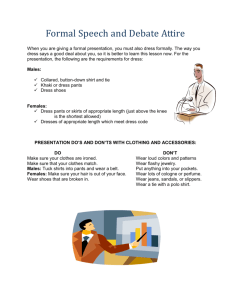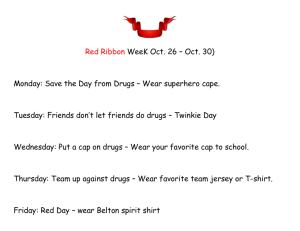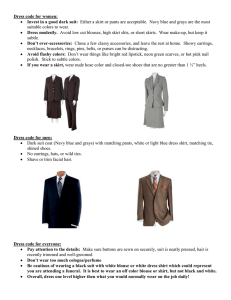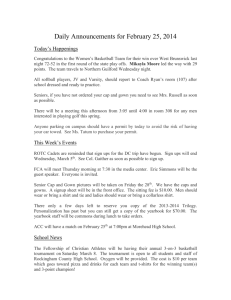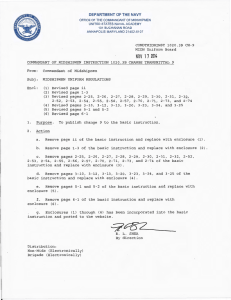uniform policy - Glendale East Public School
advertisement
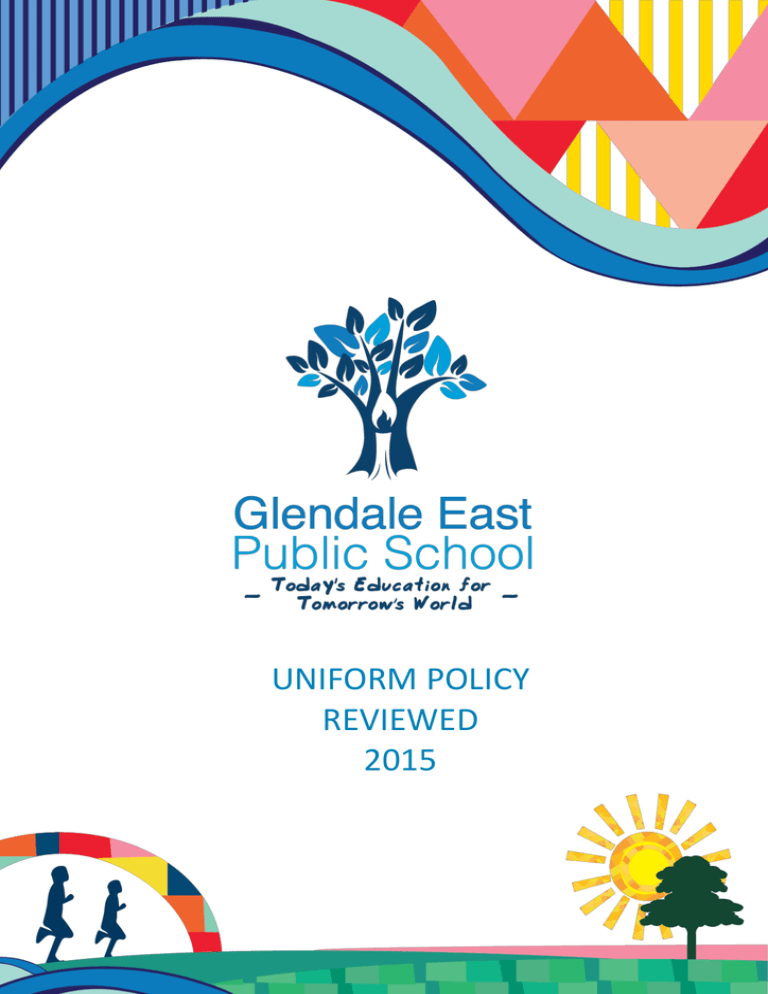
UNIFORM POLICY REVIEWED 2015 A school uniform consists of a limited range of clothing, including footwear and headwear. It identifies student as belonging to a particular school. Schools usually expect students to wear the uniform during school hours, while travelling to and from school, and when engaged in school activities out of school hours. The Department of Education and Training supports the wearing of school uniforms by students and the upholding of high standards of dress by students and staff. The Department recognises that NSW has a long history of school uniforms or dress codes being decided by the local school community. The NSW Department of Education & Training states that: ‘All students in NSW Government Schools are expected to maintain a neat appearance, including adhering to the requirements of the school’s uniform or dress code policy. At Glendale East Public School we expect students to wear the uniform during school hours, while travelling to and from school, and when engaged in school activities out of school hours. Principles Decisions about school uniforms should be consistent with occupational health and safety, anti-discrimination and equal opportunity legislation. Aspects of the uniform related to safety, e.g. safe footwear, eye protection and hats, will need to be enforced as appropriate. Each school's uniform policy must be the result of formal consultation with students, teachers and parents or carers. The consultation will be conducted in a manner appropriate to each school and be based on participatory decision-making principles. The school's uniform policy and uniform requirements should be formally endorsed by the school community before implementation. A school's uniform policy should take into account the diverse nature of the student population in the school and not disadvantage any student. Economic, personal, social and cultural factors affecting students and their families must be considered when deciding on items of uniform. Other considerations, such as body shape or religious requirements should be taken into account in making a final decision on the design and fabric of school uniforms. The school's uniform policy and school uniform requirements should be reviewed at least every five years and amended where necessary. Groups within the school community may also seek a review when circumstances change significantly or issues arise. Implementing school uniform requirements Positive reinforcement and encouraging responsible behaviour are the preferred approaches to ensuring students wear the school uniform. Everyone has a role in setting the standards for the school. Teachers and other school staff model appropriate standards for students. They should dress in a professional manner at all times. Students should not be disadvantaged where required uniform items are not available because of circumstances beyond their control. Conscientious objections by parents to the wearing of school uniform should be respected. Responses to students who do not wear uniform must be appropriate. They should be clarified, agreed upon by the school community and documented. Responses must be fair and consistent. They must not prevent students from continued participation in essential curriculum activities except where exclusion is necessary for reasons of safety. In this situation, alternative educational activities must be provided. Responsibilities and Delegations It is the responsibility of the principal to ensure that the school uniform policy is developed and reviewed collaboratively with the school community. When a school community agrees on a school uniform, the principal oversights the shared responsibility for ensuring that students are encouraged to wear school uniforms that meet agreed community standards and adhere to legislative requirements. Principals must provide parents or carers with the school's uniform policy and school uniform requirements. Principals who operate within the policy framework will be supported by the Department in the implementation of this policy Responses for not wearing school uniform 1. If a child is unable to wear any item of the school’s uniform, written advise from a parent / carer needs to be sent to school with the child. 2. If a child is at school not dressed in school uniform without a written advice, the class teacher or principal will send home the ‘Out of Uniform’ notice (appendix 1). 3. If a child is continually at school not dressed in school uniform, the class teacher or principal will request a meeting where an offer of assistance for the purchase of a uniform will be provided if the family are unable to fully afford one at that time. All applications will be carefully considered and are kept confidential. CURRENT SCHOOL UNIFORM Boys Black shorts or pants Girls Black shorts or pants Blue and white School shirt with logo – School dress, optional black tights for winter supplied by P and C uniform Committee. Blue and white School shirt with logo – School Jumper – Blue and Black with logo – supplied by P and C uniform Committee. supplied by uniform committee School Jumper – Blue and Black with logo – White socks supplied by uniform committee Black shoes or joggers for sports days White socks Black shoes or joggers for sports days YEAR 6 SHIRTS Each year the outgoing cohort of year 6 students have the opportunity to wear a year 6 shirt. This shirt should maintain the traditional colouring and integrity of the regular school uniform. The design of this shirt should be a collaborative process between the year 6 students, their parents and the school and its representatives.



